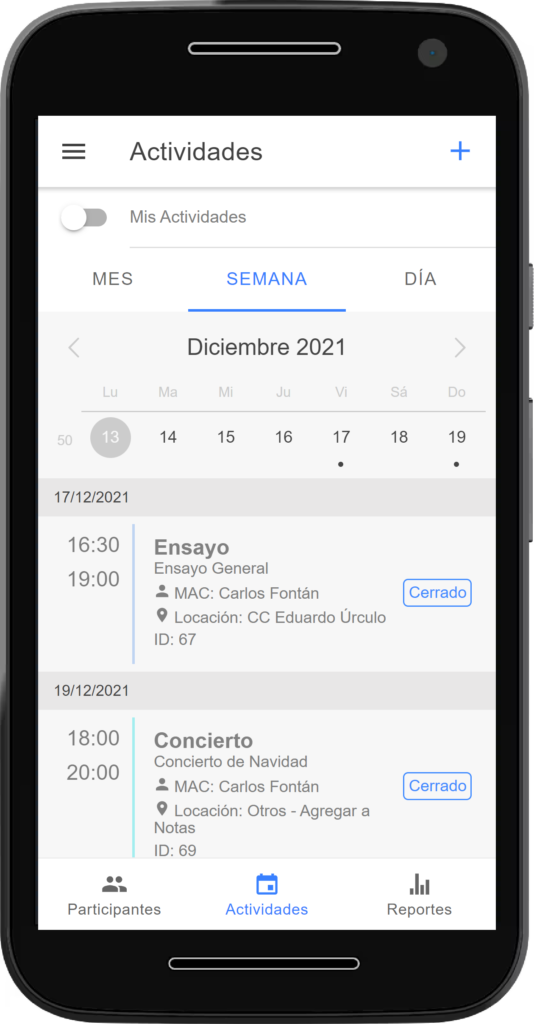| Development Time | 4.25 Months |
| Methodology | Continuous Delivery |
| Iteration Duration | 2 weeks |
| Current Iterations | 8.5 |
| Platform | Online: Cloud, Web, Mobile |
El Sistema: Inclusion and growth through music learning
I remember the first time I heard about the El Sistema. I was a kid growing up in Venezuela, and I could not believe the images on the T.V.
Kids with violins and other classical instruments playing together in one of the poorest and most dangerous barrios of Caracas.
Surreal… As a kid raised in Caracas, I would never have matched the performers with their context.
Beautiful and complicated music, played by an orchestra of disciplined, harmonious, connected, peaceful children, surrounded by poverty and obvious violence.
Talk about contrast.
For me, children from that kind of barrio, was more like a gun and a voice asking for my shoes.
But these kids lived there, and they seemed so free of the violence, being greater than their surroundings but in it at the same time.
I learned that the orchestra had traveled the world, played in London, the USA, Spain, and many other First World countries.
The kids who would probably have felt excluded from society were included not only in the Venezuelan society but in the World society.
Children that were destined not to believe in themselves, now understood that they could grow and achieve.
Inclusion, self-esteem, growth, and just amazing music.
Years later I saw a Ted speech that Abreu gave remotely as he received the Ted Prize. I could not be more proud that a vision so big started where it did.
Hi, my name is Ernesto, I am almost 41 years old, I live in Catalunya Spain at the moment, and I work in Software.
I’ve worn many hats in the Software Industry, and recently I have worn that of a Consultant and Full-Stack developer through Catwizard to help start and build a platform that digitilizes an important part of everyday operations at the non-profit Acción Por la Música (ASM).
Acción por la Música is an Spanish non-profit based in Madrid inspired in “El Sistema”,
El Sistema-inspired programs provide what the International Journal of Applied Psychoanalytic Studies describes as “free classical music education that promotes human opportunity and development for impoverished children.”
Wikipedia

I am very happy to contribute to this mission. As a father and software developer, it makes me very happy to know that my efforts are aimed to make at least a little difference, for the better, in this world.
Why a Custom Software?
You should not always build custom software. Then again, only those building custom software are going to survive the digitalization revolution.
So the question that everyone should be making is what custom software should I be building? (If you are looking for an answer to that question I recommend a book called Ask Your Developer by the creator of Twilio. Chapter 1: Build vs Die.)
Because the main goal of the project is to take the processes that make El Sistema so unique, valuable, and successful for ASM and apply leverage in the form of Software, I believe this is a platform worth building.
Give me a lever long enough and a fulcrum on which to place it and i shall move the world
Archimedes
Status
At the time of the writing, the software is in continuous development, slow adoption, and frequent experimentation.
It has started the adoption phase, starting with one music director, one teacher, and a group of students.
We are all very excited when we see what it can become, but at the same time with our feet in the ground solving daily issues.
Service Architecture
The goal is big, resources limited (that’s life), and to accomplish the goal a big list of features needed to be developed.
Things like, following student progress in real-time, better collaboration among the personnel, being able to detect and prevent possible issues faster, centralizing data in real-time, communicating schedules between teachers, planning activities, sharing resources…
To build a system that solves so many problems, we decided to divide the platform into 2 main online services, the Mobile Application, and the Administration System.
Mobile App
Mobile App (PWA): This is the most used interface, used by teachers, directors, and most of the organization’s actors to create and register day-to-day activities, follow up on key metrics, plan future activities, and other tasks

Online Admin
Used by fewer to maintain critical data, such as student information, music groups, instruments, activity types, and much more.

The Tech Stack
To be able to create all the value, we leverage code generation tools, hybrid technologies, and open-source software. Here are some of the main technologies we are using.
- Jhispter: A code generation tool that took care of the main building blocks of the application, so we could focus on value
- Ionic Framework: A framework that allows developers to write a mobile-oriented user interface for web AND native.
- Spring Framework: For the backend code
- Angular Framework: For the User interface (Frontend) code
- Mysql: For database
- Github: For deploying, code repository and agile board
- AWS: For cloud servers
- Caddy: For proxy service and SSL automatic management
- Docker: For containers
Thanks For Reading
It was a pleasure for me to share with you the status of the project. I look forward to writing part 2 soon as the project unfolds. If you have any questions or comments you can reach me at https://www.linkedin.com/in/ernesto-butto-98943821/